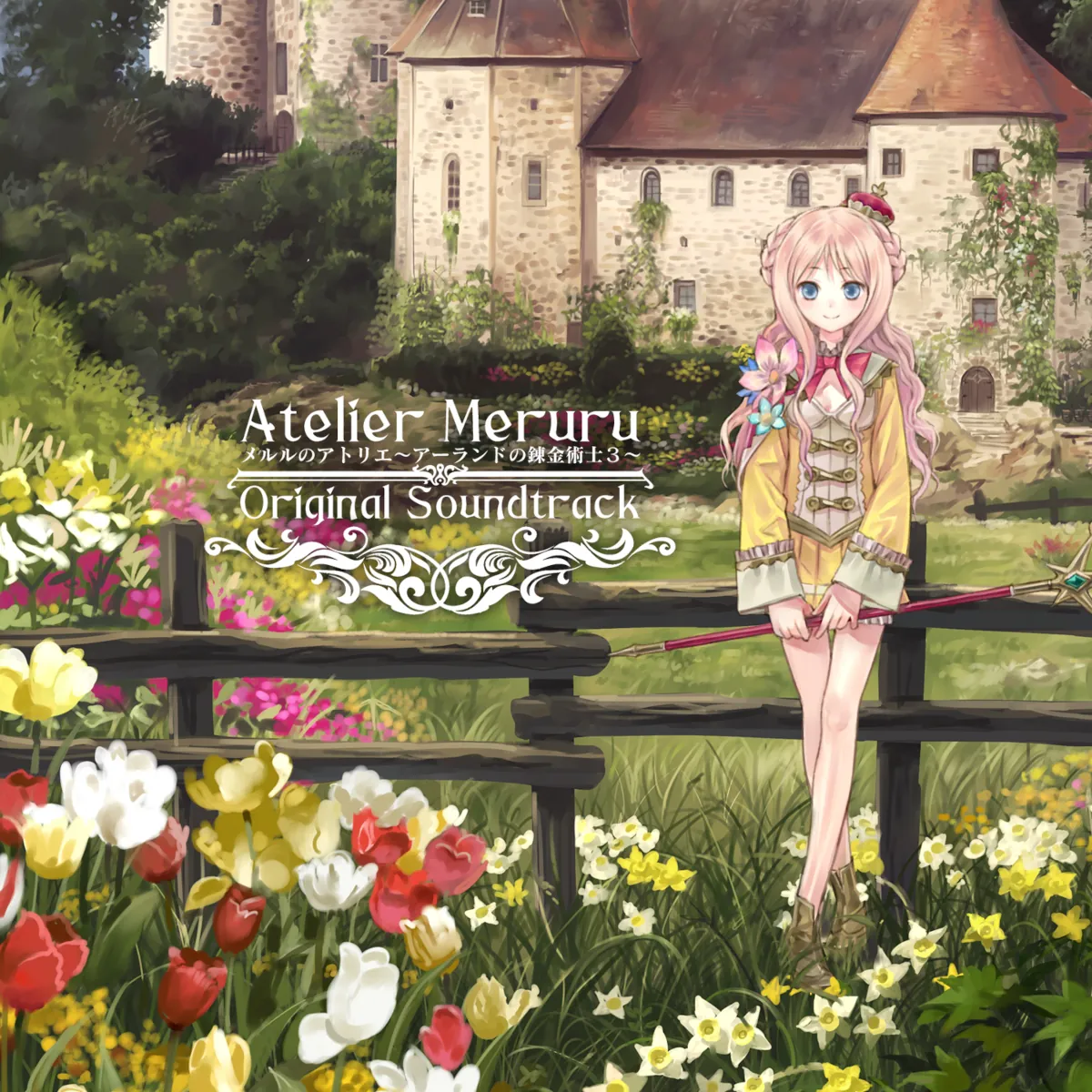The last game in the Arland trilogy, and the 13th main title in the series, Atelier Meruru packs in more music than any previous Atelier game. Proof positive: the soundtrack is three discs. The total time for the three discs combined is 3 hours and 30 minutes. That’s a lot of music. The soundtrack is broken into two distinct sections. The first disc is all vocals, and then the other two discs are the instrumental BGM.
So here’s disc one: five vocal tracks, and then as many edited versions as possible. Because I know you’re wondering to yourself, “what’s the difference between Off Vocal and Instrumental?” The difference is this: “off vocal” takes out the main vocal track and replaces it with nothing. It’s karaoke. It’s your time to shine. “Instrumental,” on the other hand, replaces the lead vocal line with a comparable instrument playing the melody. Cue GI Joe “knowing is half the battle” sound clip. Now to the vocal tracks themselves…
The opening theme, “Cadena,” follows the tradition of Atelier opening themes with the upbeat 6/8 theme, but they go less provincial and more epic with this one. It’s a really over-the-top kind of opener. I’m not a huge fan, but I can respect it for what it is. “Cloudy” is a great 4/4 mid-tempo pop-rock anthem with the female vocalist reaching into the upper octaves in the chorus, but dipping low during the verses. I really enjoy this song; it’s got a great, simple chord progression.
“Little Crown” is like “Cloudy,” but slower, and with some strange mixing effect placed over the vocalist. I like the piano part and some of the mixing effects used on the instruments, but the vocals sort of ruin it for me. Lucky me, I have the Off Vocal AND Instrumental versions to listen to in place of the vocals! After that, imagine Tenpei Sato getting a shot at writing one of his cheesy super-hero theme songs for an Atelier game instead of a Disgaea game. The result is “Alchemist Girl Meruru’s Song.” Just trust me, it’s fantastic! And then, finally, there’s “Metro.” The best part of the song is in the middle, when the sugary vocals are cut completely and this crazy violin solo grabs our attention. For such a fun, upbeat rock track, I would never have expected such a kickin’ violin solo to work. And yet, here we are.
Alright, and now!! … To the BGM…
The first ten tracks are actually just two different series themes (technically, Arland series themes) used in different fashions. Among them, the best by far (in my absurd opinion) is “Smithing After Mid-Thirties.” This is our Hagel track, with the crazy male vocal synth doing random phonemes. So totally awesome, it hurts.
One track that really stood out to me early in the second disc, “Desolate Inn” (track 18). The chord progression, and to some extent the melody, mimic FFX‘s famous opener “To Zanarkand.” I really dig what the Gust Sound Team did on this track. It’s really beautiful and deserves much more than the mere two minutes we get on the OST.
There’s a lot of great music on disc 2. It comes to a close with the 3 end credits variations, followed by all the game’s jingles. Then, on to disc 3, where we find a huge pile of re-used music for the series (that goes outside just Arland and into all Atelier sound source).
Zooming out to a 30,000 foot view, I have to say, what makes this soundtrack so good is that I cannot for the life of me say for certain what is recorded live and what is sequenced. The quality of the plucked string instruments in particular (guitars, mandolins, banjos, ukuleles, etc) is higher here than in any previous Gust title. The winds and bowed strings sound decent too, and the synth horns, while far from life-like, sound pretty decent too. All of this increased sound quality comes with the usual Gust Sound Team compositional style. Which is to say, it’s quite good.
Finally, if you’re looking for one man’s ranking of this soundtrack among the rest of the series, I’d put it below Totori, Viorate, Iris 1 and 2. It ties with Judie and the Mana-Khemia soundtracks, and is above Rorona and the many others I didn’t mention.




